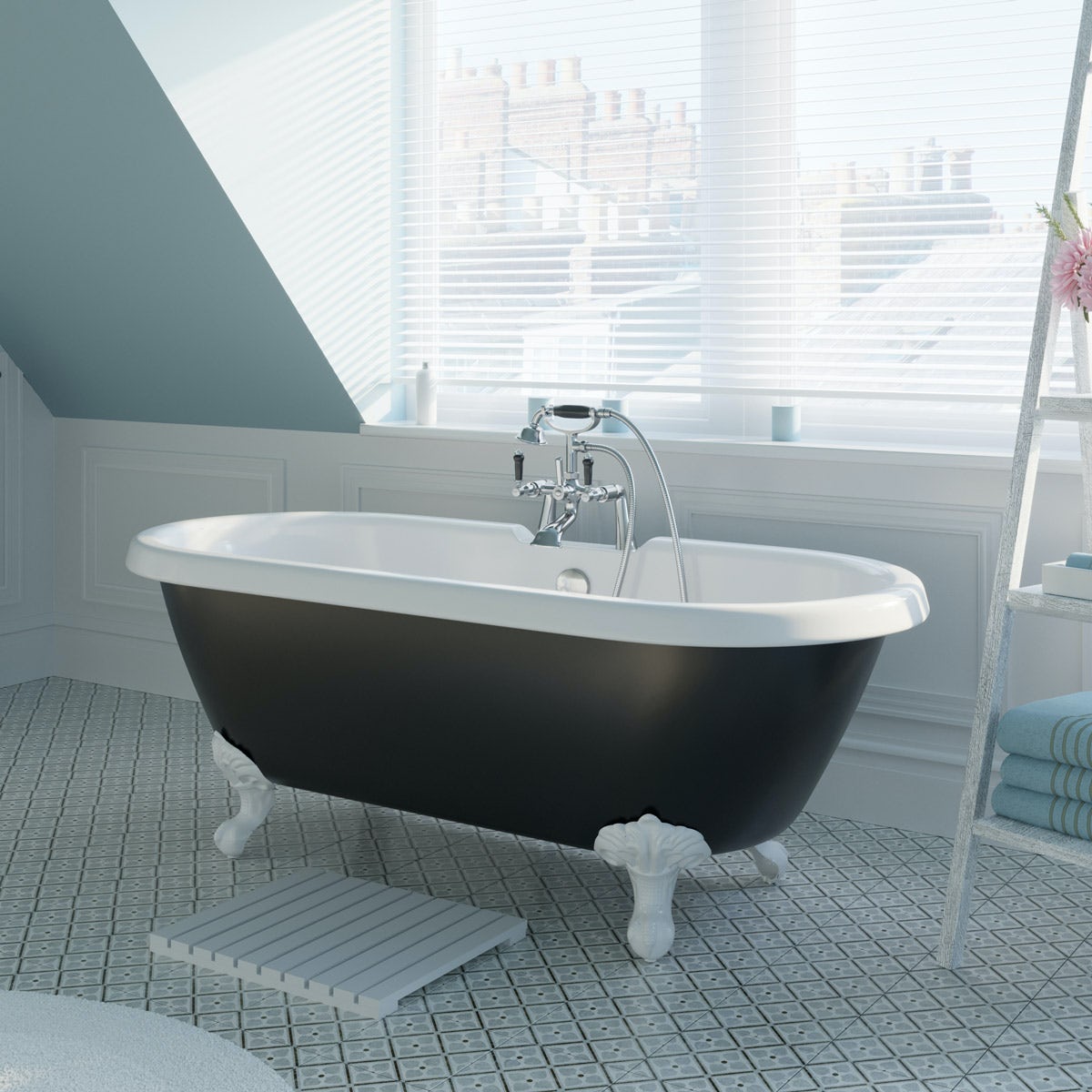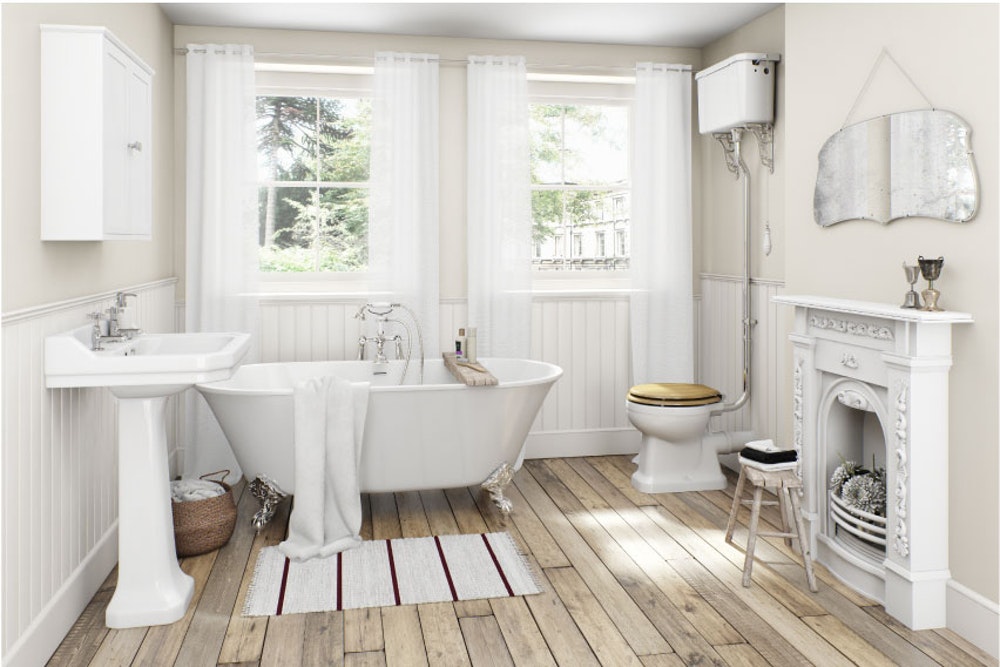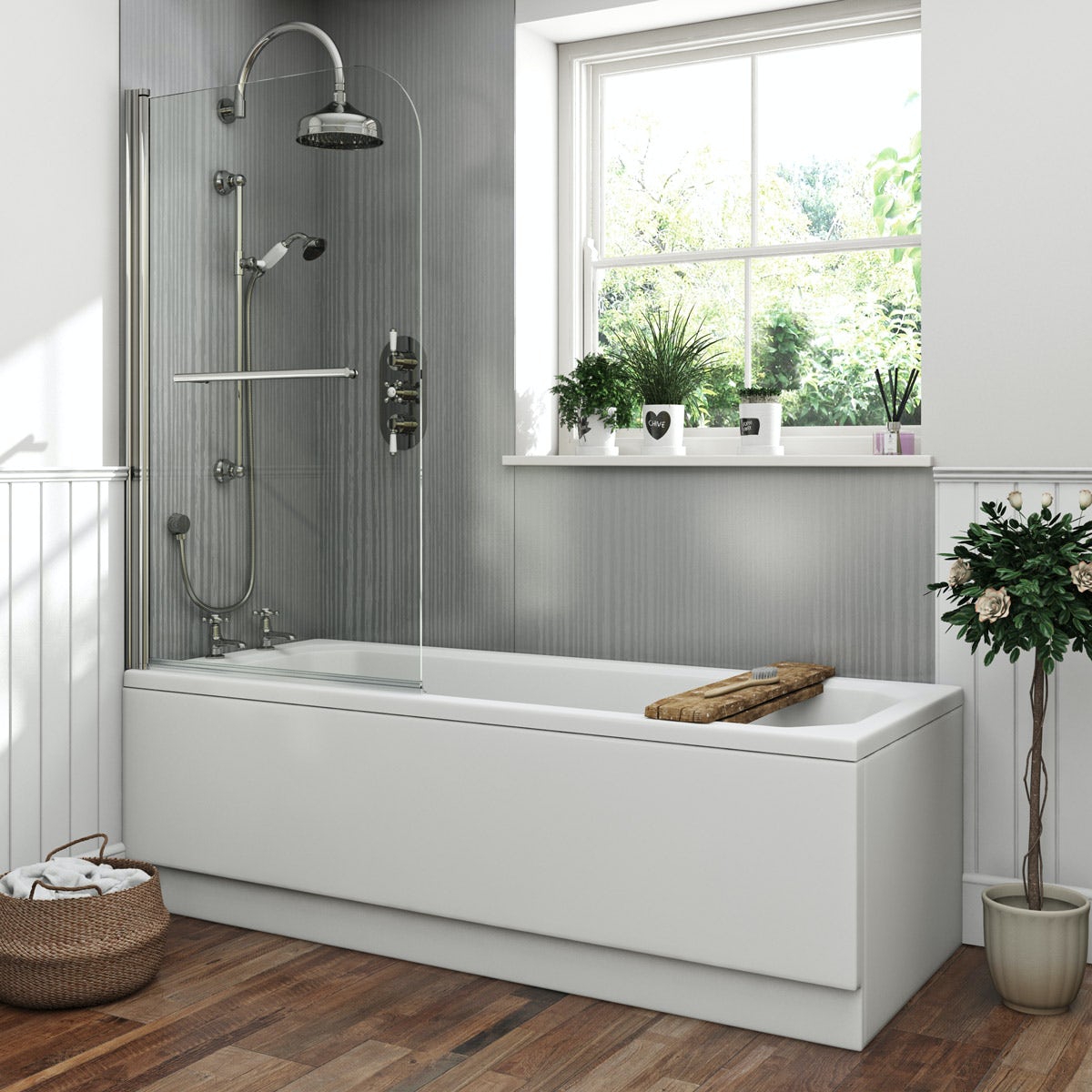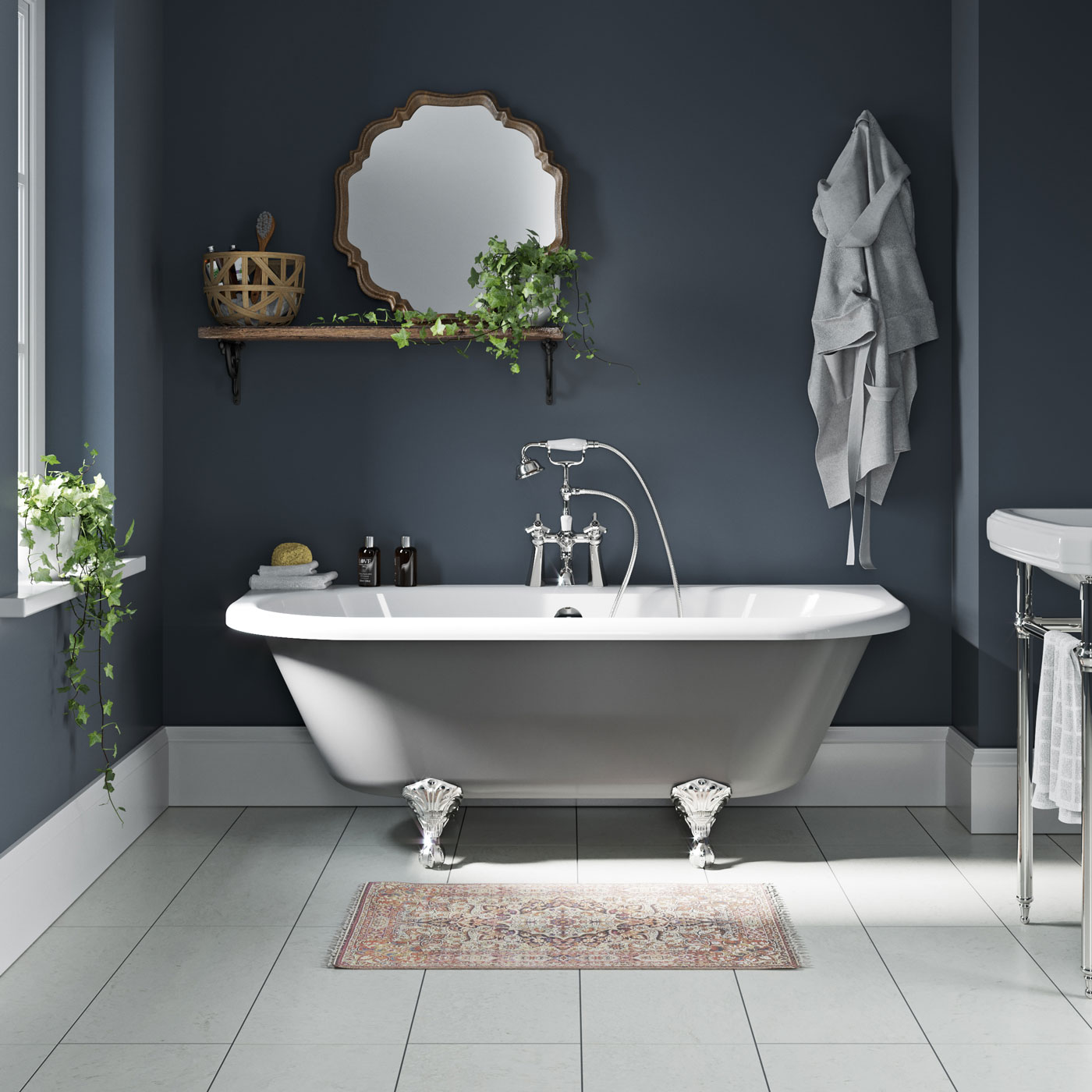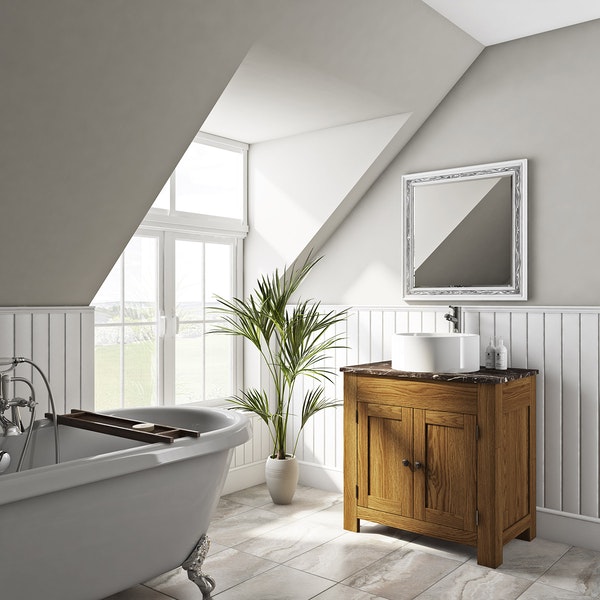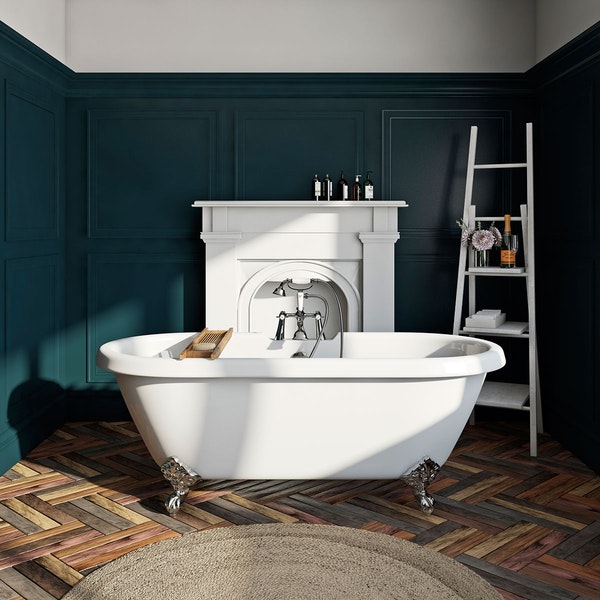You’ve finally done it—you’re giving your bathroom the makeover of your dreams! But after days of tired searching for a bathtub that fits your style and budget, you’re feeling a bit overwhelmed. Don’t worry—it’s easy to feel like this when it comes to selecting a bathtub for your bathroom. Fortunately, we’ve created a comprehensive guide to finding the perfect tub for your bathroom to make this process as painless as possible. From material considerations, to functionality features, and of course, budget, we’ve got you covered on all angles. So, grab a cup of coffee, settle in, and get ready to indulge in the art of bathroom remodeling! It’ll be fun and rewarding in the end, we promise!
Quick Breakdown of Key Point
When selecting a bathtub, consider the size and shape of your bathroom, the type of material you want (acrylic, cast iron, etc.), and any special features such as jets or whirlpools. Additionally, think about what style will look best with your existing bathroom decor.
Types of Baths
When selecting the perfect bathtub for your bathroom, it’s important to consider the various types: freestanding, fitted, and inflatable. Each type has unique features and benefits that can help you make an informed choice.
Freestanding bathtubs are a popular option due to their elegant design aesthetic and easy installation. They don’t need to be secured to the wall or floor since they are free-standing units, making them an ideal choice if you don’t have enough space for a larger tub. The downside is that depending on the shape of your bathroom, these tubs may not fit properly.
Fitted bathtubs are literally “fitted” into the space provided in your bathroom—they are mounted onto walls or corners and secured with hardware into your bathroom floor. This is a great option if you’re looking to save space, as most designs are designed to fit snugly into tight spaces. On the other hand, because of their small size, fitted tubs may not be roomy enough for long, comfortable soaks.
Inflatable bathtubs offer a unique combination of portability and convenience. Unlike more permanent fixtures like freestanding or fitted tubs, inflatable tubs are lightweight, collapsible options that can easily be moved and stored when not in use. However, their lack of durability may be an issue. Inflatable materials don’t last as long as standard materials used in other types of bathtubs.
Now that you know the different types of bathtubs available on the market today, let’s take a look at one of the most common decisions homeowners have to make when selecting a tub: freestanding versus fitted. In our next section we’ll explain how to determine which style will work best for your bathroom and lifestyle needs.
Freestanding vs Fitted
Freestanding vs Fitted: When it comes to choosing a bath, one of the main decisions to make is whether to opt for a freestanding or fitted model. Freestanding bathtubs can make a bold statement in a bathroom and come in a variety of designs, shapes, and materials. They are often seen as more aesthetically pleasing and can create an eye-catching focal point in the bathroom, especially when chosen for their uniqueness or vintage design. Furthermore, these bathtubs are usually easy to install and require minimal plumbing work.
On the other hand, fitted bathtubs offer consistency and save space that may otherwise be wasted with a freestanding tub. This type of bathtub is likely to blend better with existing fixtures and as it is secured directly into the wall/floor, there will generally be no need for additional support such as with many free standing models. Additionally, this type of tub often connects seamlessly with showers and other bathroom components.
When deciding between freestanding vs fitted bathtubs it’s important to consider both sides of the argument carefully. Factors such as size, shape, design preference, cost, installation requirements, and available material should all be taken into account before settling on the right one for your space.
Whichever type of bathtub you choose for your bathroom renovation project, it’s essential you take your time evaluating different options to ensure you select the perfect product for your needs. With that being said, let’s move onto discussing some crucial factors you should consider when choosing a bathtub for your bathroom next.
Essential Information
When selecting a new bathtub, homeowners must choose between freestanding and fitted models. Freestanding designs can add an aesthetically pleasing and unique look to the bathroom space, but may require additional support during installation. On the other hand, fitted models require less plumbing work and blend better with existing fixtures in the bathroom. Before making a selection, homeowners should consider factors such as size, shape, design preference, cost, installation requirements and material type. Lastly, it is important to take your time when making a decision to ensure you select the best product for your needs.
Factors to Consider When Choosing a Bathtub
Choosing the perfect bathtub for your bathroom involves a lot of research and assessing your own needs. There are several factors to consider before making a final decision.
The first thing to think about is budget. Having an overall budget ahead of time will help you determine which materials you can afford, as well as whether or not you may need to hire a professional to install it. You’ll also want to keep in mind any added costs associated with the purchase, such as delivery fees or accessories for the tub.
Another factor to consider is style. Do you prefer a freestanding bathtub? Or do you want an alcove-style model that integrates seamlessly into the design of your existing bathroom fixtures? If you choose a clawfoot tub, do you want one with feet or built-in legs?
A third factor to weigh is space. Consider where your bathtub will be placed in relation to other bathroom fixtures such as sinks and toilets, and think about its size in comparison to the room it’s going into. Too small of a space can be cramped and uncomfortable; too large of a space may overwhelm the rest of the design in the room. Once you have an idea of available space, measurements would be helpful as well — particularly if you won’t be ordering a standard size tub.
Finally, consider features and amenities that are important to you. Does your bathtub require special features such as jets or a hand shower? Or maybe luxuries like aromatherapy and mood lighting? Thinking ahead about the features and amenities you want during your soak can help guide your purchase so that you get exactly what works best for you.
Considering these factors can help make choosing the perfect bathtub for your bathroom much easier and allow you to select one that fits all of your unique needs. Now let’s move on to discussing size, material and plumbing considerations when picking out the best bathtub for your home.
Size, Material and Plumbing
When considering bathtub size, the dimensions of your bathroom are going to be a major factor in determining the right fit. Standard tubs come in one of two sizes: 60-inches for full-size bathrooms, or 48-inches for standard bathrooms. For larger bathrooms with ample space, you may want to consider purchasing a wider tub or an alcove or freestanding tub. Alcove or freestanding bathtubs can come in many different shapes and sizes. You may even need custom made tubs if you have an unusually shaped bathroom or a particularly large shower area.
Material is another important element of choosing a bathtub that can vary depending on individual preference. Common materials including acrylic, porcelain on steel and cast iron enamel. Acrylic is the most lightweight material, making it easier to transport and install by professionals. Acrylic also goes well with many bathroom designs since it’s available in an array of colors, patterns and textures. Porcelain-on-steel offers strength and durability while still being reasonably priced. Cast iron enamel resists scratches and chips due to its tough exterior but is heavier than acrylic making it more difficult to install or repair if needed .
One should also consider plumbing when selecting their bathtub for the bathroom renovation project. Each type of tub will require unique plumbing fixtures such as drains, spouts, valves, overflows and accessories like hot water mixers and soap dishes. If replacing an existing tub, you will probably need to purchase new connections since pipe connections are typically built into the original installation of a new bathroom during construction. A thorough understanding of particular needs of your project is critical before purchase takes place so that any potential plumbing issues are addressed beforehand.
Choosing the perfect bathtub requires careful consideration of size, material and plumbing elements. Having an understanding of all these areas allows one to make the best decision for their own personal preferences as well as their exact bathroom needs. Now let’s move on to styling and design tips for creating your dream soaking haven!
Styling and Design Tips
When selecting a bathtub for your bathroom, styling and design is arguably the most important factor to consider. There are a variety of style types available on the market today, so it is necessary to evaluate your own taste before making a decision. For example, traditional style tubs offer a classic look with gentle curves that bring an inviting warmth to any bathroom, but freestanding tubs offer more of a modern aesthetic with sleek lines that make for an eye-catching statement piece in any space.
Bathtubs can also come in various shapes. Rectangular shaped bathtubs are ideal for bathrooms with plenty of space and provide a contemporary look, while rounded tubs not only fit better into smaller spaces but they also help to soften the overall feel of the room. Consider the existing decor in your bathroom when choosing between these two shape options.
Some people may prefer the unique look of a corner bathtub, where two sides of the tub are made to fit up against walls at either end. Corner tubs can be difficult to clean around, however they do provide additional space compared to other styles since they share walls with both sides of adjoining walls—a definite advantage if you have limited real estate in your bathroom.
On one hand, opting for a more conventional style may be safer and easier to incorporate into an existing design scheme; on the other hand, experimenting with fun and bolder styles can create an impactful look and feeling in the bathroom. Whatever style you choose should match the overall vibe you’re going for: warm and inviting or contemporary cool.
Now that you’ve got styling and design tips covered, its time focus on what features will give you added luxury and comfort for your new bathtub – let’s explore this topic further in the next section.
Luxury and Comfort Features
When searching for the perfect bathtub, there are many luxury and comfort features to consider. Depending on your budget and the aesthetic of your bathroom, you may choose a soaking tub, a whirlpool tub, an air tub, a vibracoustic tub, or something completely custom. Each of these options offer different levels of luxury and comfort that can help end your day in relaxation.
Soaking Tubs are designed to be basic, but highly comfortable. They provide ample space and calming depth, allowing bathers to relax in “hot” water without getting cramped – making them ideal for those who just want to relax at the end of a long day.
Whirlpool Tubs provide a more intense massage than soaking tubs. With jets that create small waves of water pressure from all angles, a full body massage is possible with the press of a button. While this type of bathtub takes longer to drain and fill due to its excess water lines, it can provide a much-needed therapeutic touch for those suffering from chronic pain or muscle tension.
Air Tub options are similar in design to soaking tubs but contain air jets instead of water jets for massaging various body parts. These jets stimulate circulation as well as alleviate unique areas of sensory tension such as feet or lower back – creating an unparalleled level of luxury and relaxation experience at home.
Vibracoustic Tubs incorporate both vibration and sound technology into their design by sending out carefully-timed vibrations and music through the entire surface area of the bathtub. The low frequencies reduce stress while simultaneously simulating the sensation of floating in shallow water; making it the best option for those seeking an immersive spa-like experience in their own homes.
From these pre-made options, custom designs remain popular as they allow bathers to craft the perfect combination of size, shape and material to meet their needs and preferences perfectly. Whether opting for stone, acrylic or cast iron in any colorway available – custom designs guarantee the ideal look and feel desired by homeowners willing to invest extra money into making their dream bathroom come true – regardless of the cost.
Ultimately, whichever luxury and comfort features you decide upon, it is important to ensure that it properly fits into your space before purchasing (and installing) it. With so many options available on the market today, you should thoroughly research each one before deciding which works best for your home. With this knowledge in hand, now comes the time to install your new bathtub!
Installing Your Bathtub
Installing your bathtub is a critical step in creating the perfect bathroom environment. You may choose to have a professional plumber come and handle the installation, or you can take it upon yourself and save some money. To ensure that the job is done well, here are some tips on the best way to go about installing your new bathtub.
For those who opt for professional installation, it’s important to find a reliable plumber who has experience installing bathtubs. Check out reviews online and ask for references from any neighbors who have had work done by the plumber you’re considering. Once you have found a quality plumber, inquire about their process for installation and any possible additional costs outside of labor. A good plumber will be able to answer all of your questions and give you an accurate quote for their services.
If you decide to install the tub yourself, research the manufacturer’s instructions carefully so that you can properly and safely install your new tub. Do-it-yourself installation can be much more complicated than anticipated, so make sure that you understand all steps in the process before beginning. Also, be aware that some jurisdictions require building inspection at various stages of construction — like during bathtub installation — and thus require permits and professional plumbers performing certain jobs. Be sure to check with local regulations prior to starting your installation.
Regardless of which route you choose for installation, it is important to ensure proper leak prevention by sealing off edges with caulk and checking again once filled with water. Plumbing connections must also be properly secured with sealants where needed. If any of these steps are skipped or completed incorrectly, water damage could occur later on, leading to costly repairs.
By taking the time to properly install your bathtub, you can be sure your bathroom is safe from future leaks or water damage. Now that your new tub is securely in place, move on to our next section about ideas for remodeling your bathroom!
Ideas to Remodel Your Bathroom
Remodeling a bathroom not only upgrades its condition and adds to the aesthetic appeal of your living space, it can also have practical benefits, such as increasing its resale value. However, before making any major decisions about remodeling, you should consult with a professional for advice.
To get started with your bathroom remodel, consider the overall look you want for the space. This could include changing the color scheme or replacing fixtures like the toilet, sink or bathtub. Consider adding shelving or storage options to declutter and increase organization within the space. Think about ways to upgrade the lighting and broaden the use of natural light in the bathroom. You may even wish to add luxury elements such as a spa-style jetted bathtub or heated tile floors.
When deciding how much money you want to spend on your remodeling project, consider all of your options carefully. While spending more money on certain items might give you a great return on investment if you choose to resell your home in the future, it’s best to weigh both sides of this argument: paying less money now has its advantages too. For example, opt for a plain white tub instead of expensive stone tiles — this can help keep your costs down without compromising too much on quality or design.
Be sure to research local building codes, permits and regulations before beginning your remodel. Work with an experienced contractor who can help ensure that all building codes and regulations are met. Finally, stay organized throughout the process. Establishing a timeline helps ensure that tasks are accomplished in sequence so that you end up with the perfect bathroom you envision.
Responses to Frequently Asked Questions
What size bathtub is best for my bathroom layout?
When determining the best size bathtub for your bathroom layout, it’s important to consider both your available space and the size of the person or people who will be using the tub. Smaller bathrooms may require a smaller bathtub, such as a corner tub or alcove tub, while larger spaces may accommodate anything from a full-sized traditional tub to an extra-large spa-like soaking tub.
If space is at a premium, corner tubs, free standing tubs and alcove tubs all provide good options that won’t take up much of your floorplan. If you have more room, consider a drop-in or freestanding soaking or whirlpool tub that gives a luxurious feel to your bathroom.
Finally, if you are replacing an existing bathtub, be sure to measure carefully so that you can get a new one that fits in the same space with minimal plumbing and construction work.
What are the most important features to look for when choosing a bathtub?
When selecting the perfect bathtub for your bathroom, there are a few key features to consider. First and foremost, it’s important to select a tub with an appropriate size. This includes both the physical dimensions of the tub (length, width and depth) as well as its capacity — make sure you choose a tub that fits comfortably in your space and can accommodate a comfortable amount of water for how many people will be using it.
Second, the material of the bathtub is also important. You want something durable that can withstand regular cleaning and wear-and-tear over time without staining or cracking. Popular materials include acrylic, enameled cast iron and fiberglass. Do your research to make sure the material selected is right for your needs.
Third, you should think about what type of installation works for you — do you prefer a drop-in or built-in tub? Optimal ease of installation should be taken into account, depending on your budget and timeline.
Finally, think about any extra features that might be beneficial in your bathtub — faucet placement, drainage configuration, mounting hardware, slip resistance and more — these are all additional items to consider when purchasing a bathtub.
What materials should I consider for my bathtub?
When choosing the perfect bathtub for your bathroom, you should consider the material it is made of. Common materials are acrylic, cast iron, and enameled steel.
Acrylic tubs tend to be more lightweight than other materials, making them easier to install, and they come in stylish designs. They also retain heat, but can scratch easily and require special cleaners.
Cast iron tubs offer a luxurious look, often with distinctive details like clawed feet or wraparound aprons. Cast iron is very durable and retains heat well, plus it’s easy to clean. The downside is its heavyweight nature and cost.
Enameled steel tubs are usually less expensive than other materials, and come in a variety of colors, shapes and sizes. They also provide ample space for soaking, and are lightweight and easy to install. The downside is that they may rust over time if not cared for properly.
No matter which material you choose for your bathtub, make sure to research reviews and ratings before making any purchases to ensure you’re getting a quality product with great value for your money.

